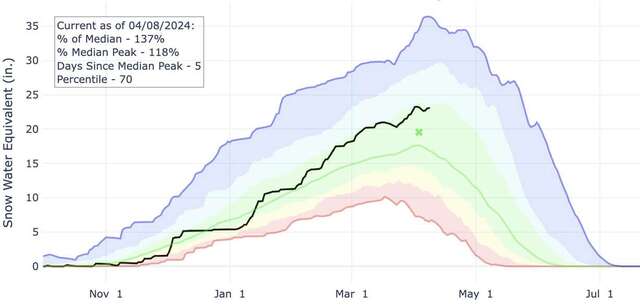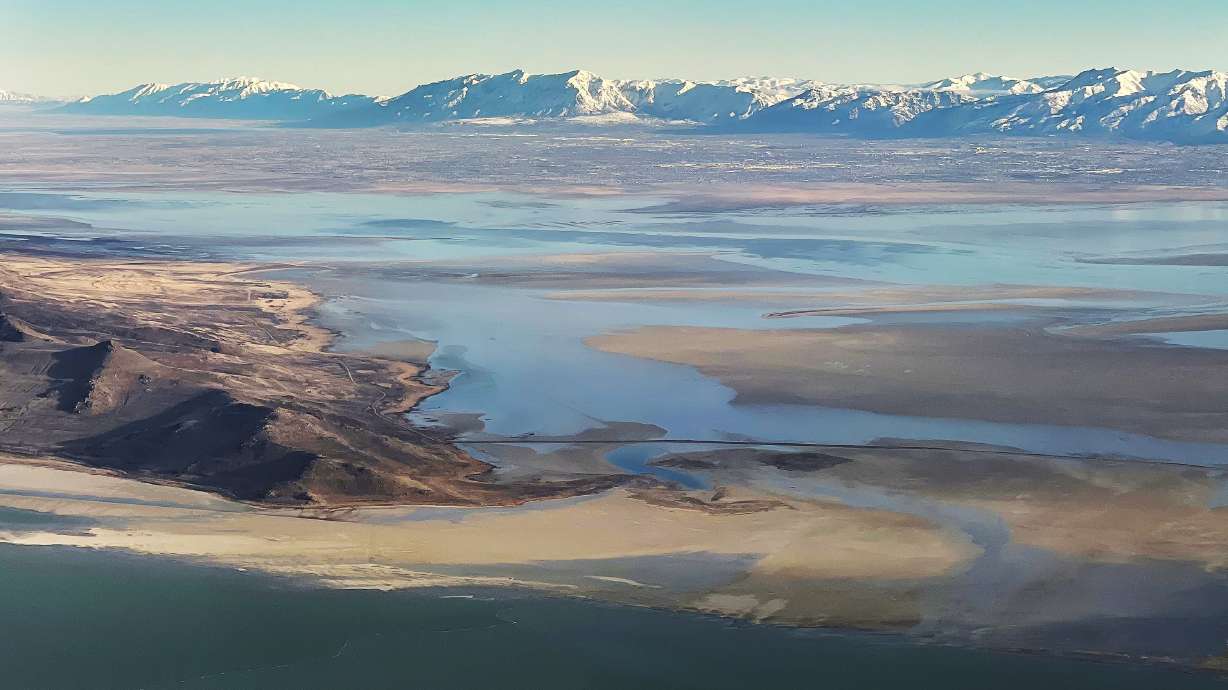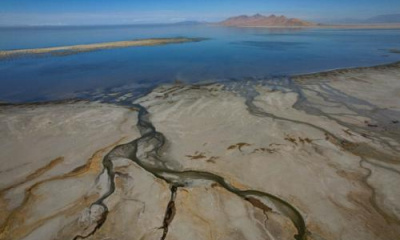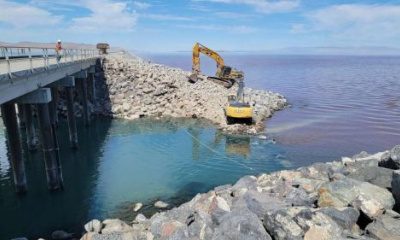SALT LAKE CITY — The Great Salt Lake was already expected to receive a strong boost from this year's snowpack, but projected inflows are now expected to be a bit larger after a productive round of March storms.
The Natural Resources Conservation Service now estimates that the lake, which is already the highest it has been in four years, could gain anywhere from 600,000 to 1.42 million acre-feet of water between April and July, raising the lake's water levels by 0.4 to 1.5 feet.
Agency officials said the median — or most likely outcome — is that the lake will gain about 1.01 million acre-feet, which would add about 0.9 feet to the lake level, according to a report the agency published last week about the state's water supply.
"The relatively small amount of available reservoir capacity in (the Great Salt Lake) basin reservoirs will likely lead to significant surplus water that may make it to the (Great Salt Lake)," Conservation Service officials wrote in the report.
Agency officials previously wrote that the lake could gain another 1.2 feet by the end of the snowpack collection following a strong end to the meteorological winter.
However, Jordan Clayton, a hydrologist and director of the Utah Snow Survey, explained to KSL.com last month that the projections don't account for downstream diversions for consumption, controlled releases from reservoirs or a berm that splits the lake in half. All of these are why the total could be higher or lower — and may not impact all lake areas.
Water levels at the Great Salt Lake's southern arm are now up to 4,194.4 feet elevation, up about a half-foot from the previous projection and also the arm's highest point since the spring of 2020. Its northern arm is back to 4,191.3 feet in elevation, having gained less because of the berm splitting the lake in half.
What helps is that last month was Utah's 23rd-wettest March since 1895. The snowpack that feeds water within the Great Salt Lake basin rose by another 5 inches of snow-water equivalent in March, forcing the Conservation Service to adjust its lake outlook. The region's snowpack collection reached 23.2 inches on April 1, 3.6 inches above the region's season median.

This graph shows Utah's snowpack levels within the Great Salt Lake basin (black) as compared to other snowpack collections over the past four decades. The green line represents the median average from 1991 to 2020. (Photo: Natural Resources Conservation Service)
It remains at 23.1 inches as of Monday, having lost 0.6 inches to snowmelt over the past week but regaining 0.5 inches from a storm that dumped more than 2 feet of snow in parts of the basin over the weekend. Agency officials add that the new precipitation kept soil moisture levels high, which should make for a more efficient runoff.
Should the lake gain 1.5 feet over the next few months, the lake's southern arm could reach 4,196 feet elevation for the first time since 2017. That would leave it 2 feet below its minimum healthy level before the lake is expected to drop off again during the summer.
Brian Steed, Utah's Great Salt Lake commissioner, said last month he was thrilled with the previous outlook as the state office — created last year — continues to find ways to get water to the lake.
"It's still not healthy, but it's closer to healthy than we have been anytime since 2019," Steed said. "We're really happy to (potentially reach 4,195 feet elevation) there this year."









